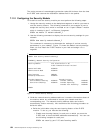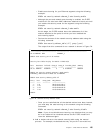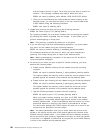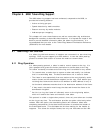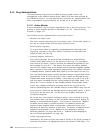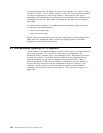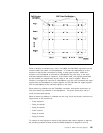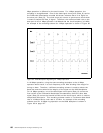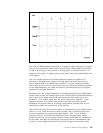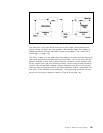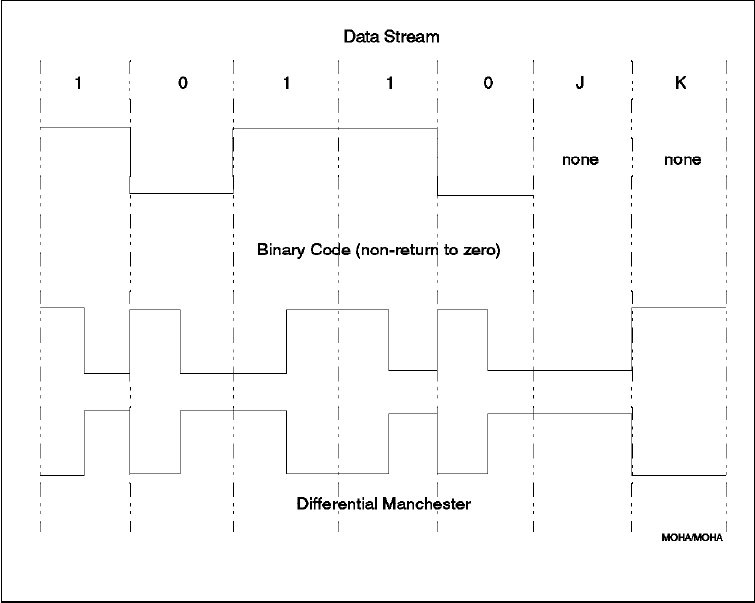
8.1.4 Differential Manchester Coding
The 802.5 standard specifies that Differential Manchester coding is used for
transmitting data on the ring. With this encoding technique, every bit is
comprised of a half-bit time signal at a low or high polarity and other half-bit
time signal at the opposite polarity. The mid-bit transition is for clocking only.
The direction of the signal′s voltage transition will change whenever a ″0″ bit is
transmitted and will stay the same for a ″1″ bit transmission. Therefore, each bit
consists of two half-bits at opposite polarity. This scheme is said to be
DC
balanced
. Figure 80 shows the principles of the Differential Manchester coding.
Figure 80. Differential Manchester Coding
To understand the reasons for DC balanced signalling, consider a
baseband
transmission using a simple transmission code such as NRZ (Non-Return to
Zero) where during the transmission a ″1″ bit is represented as a + voltage and
a ″0″ bit is represented as a - voltage (opposite direction of the ″1″ bit).
Depending on the bit stream that is being transmitted with NRZ, it is possible
that the line may spend on average more time in one voltage level than the
other. In other words, the signal would be electrically
unbalanced
. Since the
physical wire has capacitance, the unbalanced signal causes the wire to develop
a constant DC voltage across the transmission media, which in turn, causes the
transmission media to distort the signal. This phenomenon is called ″baseline
wander″ and the effect of that is to increase the interference caused by one
pulse with a subsequent pulse on the transmission media. The result of this
interference is that the signal is ″smeared″ so that the end of one bit, or a group
of bits, overlap with the start of the next. This makes an unbalanced coding
technique such as NRZ or NRZI unsuitable for high speed transmissions such as
4 or 16 Mbps token-ring networks. The use of Differential Manchester coding
technique in token-ring networks would allow us to overcome this problem and
have a DC balanced transmission on the media.
132 8260 Multiprotocol Intelligent Switching Hub



